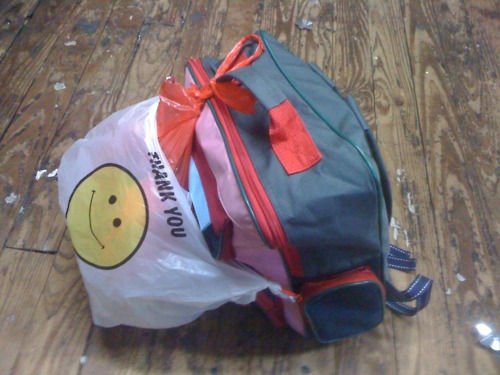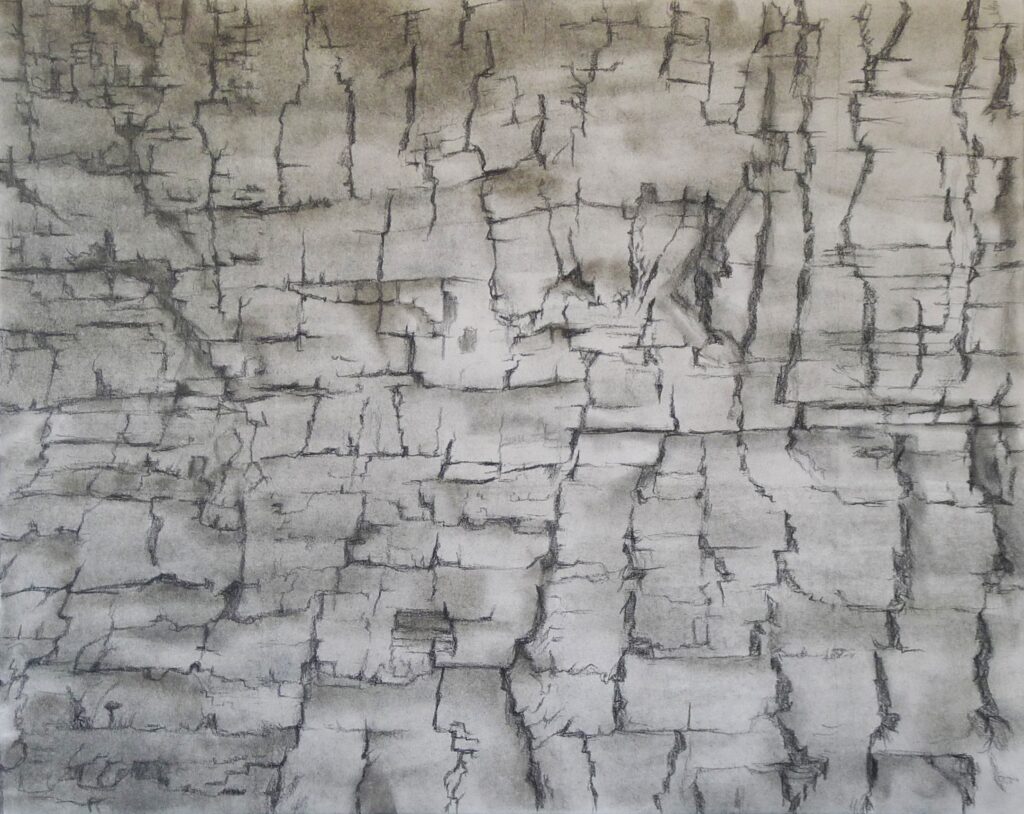When Pearl River Mart closed earlier this year, it signaled long-expressed concerns over gentrification and rising rent prices in Manhattan’s Chinatown. What will its reincarnation bring?

October 27, 2016
The last time my parents’ store, Pearl River Mart, celebrated a grand opening, their home country was a sleeping giant. Now it’s a bull market. And my family is once again preparing to launch a brand new version of its Chinese-themed department store on the city’s eternally evolving commercial landscape, with the same reckless hope that stirred my father to launch his American Dream as a starry-eyed Marxist on Catherine Street more than four decades ago.
I’ve been watching Pearl River Mart grow for as long as I’ve been alive. Its birth predated mine as an embryonic experiment in “free trade” in 1971 (back when there was no such thing between the US and China). I witnessed it bloom from my father’s crimson insurgency into a thriving retail enterprise, as mainland China’s Maoist industrial revolution yielded to an era of “reform and opening” and the Iron Curtain dissolved in a sea of free-flowing capital.
Somehow the business maintained its democratic ethos through the boom time. Attracting shoppers from inside and outside Chinatown, it drew rough hewn garment workers and polished fashionistas alike, along with a smattering of uptown and downtown intelligentsia. All arrived in search of “home,” whatever that meant for them—the perfect paper lantern or tatami for a child’s first bedroom, their home province’s garlic bean sauce, or maybe a dozen Mao poster prints as swag-bag stuffers at their gallery opening.
My parents specialized in the quintessentially cheap. I was once told by someone from a Chinese immigrant background that “Pearl River grade” became part of local parlance to refer to cheap goods from the homeland. But we took pride in serving the people with a choice selection of “worthless” wares that actually meant the world to migrants, artists, and working-class strivers, who knew the value of authenticity. My dad, chemistry post-doc turned revolutionary, accidentally invented an alchemy of niche and populist appeal, which has become an urban institution.
But last year, my parents decided they could no longer maintain the retail space. The store still had its allure, brimming with brocade gowns, Buddha figurines, and other Asian miscellany, even a tea bar. But the revenue from foot traffic couldn’t sustain the cost of running the three-level space, which was set for another six-figure rent spike. The recession, along with an overall shift toward online shopping, was draining the small retail sector.
A shop that had exploded out of China’s neoliberal big bang was now getting eclipsed by a rush of speculative development dollars and plexiglass chain stores. The announcement of the closure—a bookend on an era in the city’s cultural evolution—brought crowds of mourners streaming to the store for an oddly nostalgic final clearance sale.
Last spring, shortly before the storefront shuttered for good, my father took the longtime staff out for a farewell dinner at a favorite Chinatown restaurant. There, gathered around the familiar round tables, we shared a last meal, and a few addressed the group with some final words. My father, usually not one for public speaking, stood before his staff with a modest smile: the company’s achievements over the years, he reminded them, had been “the product of everyone’s diligent work.”
Looking back, he continued, “to spend a lifetime here, and accomplish something pretty good—you are happy and I am happy.” And he dropped a hint about a possible future for Pearl River in some new form: he suggested a “more than 50 percent chance that we can continue,” but if it passed onto new management, “that means we must take a turn in direction,” with a modernized format that fit the new retail economy. “There’s a possibility some employees could come back. That’s my hope,” he noted. “But today the main thing is: thanks to everyone. Thank you, thank you, thank you.”
It turned out the store was destined for a reincarnation of sorts. My sister-in-law, upon learning of the planned closure, has decided to take the helm of our enterprise as my parents retire, switching from a public relations and law career to embark on a rebranding of the business. I’ve been watching the new management’s plans evolve from a distance, but I can already discern that Pearl River 2.0 won’t be just a traditional brick-and-mortar affair. The new format will feature a ramped-up digital operation and bank on the increasingly sophisticated tastes of a new, increasingly affluent generation of Asian Americans. Many of my second-gen peers remember Pearl River from their Fresh off the Boat days. The hope is that they’ll buoy us on their globalized diaspora, bouncing between the Beijing bazaars and the Brooklyn Flea.
In addition to its relaunch, the new Pearl River is now settling into smaller digs, 7,000 square feet at the edge of Tribeca. In the lead up to its re-emergence, a pop-up storefront will launch to help lay the groundwork for a community space for ethnic-themed cultural gatherings. The new tagline, according to the presser announcing the reopening, is “thinking big, local and digital.”
Yet this model—more embedded in the digital sphere than attached to any specific neighborhood—reflects tectonic shifts in urban socioeconomic development nationwide. Residential rents in Chinatown have risen about 50 percent since 1990 (around when the store first expanded to SoHo, chasing a wider customer base). Since moving to the store’s largest (and riskiest) location on Broadway, downtown retail rents have nearly doubled within a decade. And while commercial rental markets have inflated wildly in prime areas, many beloved local independent businesses remain ensnared by the aftermath of previous years of economic tumult.
The true impact, though, isn’t captured by real estate data—it’s what’s lost as a neighborhood is emptied of the families who inhabited it for generations; it’s about the sad sighing sound that echoes in another “up-and-coming” Lower East Side corridor, as the mom-and-pop dinette closes shop for the last time and makes way for another cavernous glass-encased bank storefront. In cities across the country, small retailers like boutiques and restaurants have always suffered volatile turnover rates, but the fierce scale of gentrification in fragile neighborhoods—ethnic communities like Chinatown, and cultural colonies like neighboring SoHo and the East Village—has fueled a systematic displacement of modest-sized independent businesses.
Today, the Chinatown that outsiders once trashed as an overcrowded ghetto, is clogged with empty playspaces for corporate colonizers.
Where does Pearl River fit into this picture? As the store’s youngest daughter, I’m slightly anxious about a dramatic new twist in a business that has always been my cultural umbilical cord. I don’t know whether it’s possible anymore for the store to maintain its essential character as a marketplace of all things to all people in an increasingly fractious city. I’ve written previously that, as a historian, I was resigned to seeing the store wrap up along with my parents’ retirement, because it marked a neat conclusion to a chapter of the city’s cultural narrative. I can only hope that on this new journey the store can keep pace with a city that’s outgrowing me and many of my peers, even as it claims to embrace us as a consumer demographic.
The bottom line, though, is that Pearl River was always, and will forever be, more of a story than a store. It’s an encapsulation of a belief in reinvention, born of a time when everyday people felt they could craft their own history.
And while I look forward to Pearl River’s new commercial horizons, I wonder where the surrounding city is headed as ordinary folks are chased away by climbing housing costs.
But I also see new initiatives emerging to resist gentrification and protect the city’s eclecticism. Small retailers, progressive urban planners and artist’s collectives have allied to keep the city safe for struggling folks—pushing stronger rent control policies, fostering community-based cooperative ownership structures, and promoting public art to reclaim community spaces from predatory developers.
There is perhaps a different Pearl River legacy rising up a few doors down from the new location. At Artists Space on Walker Street, the Decolonize This Place collective holds art workshops and community discussions on how to “take back” neighborhoods like Chinatown through activism and enterprise, reflecting the same energy that inspired the founding of Pearl River decades ago.
Going forward, I don’t know if small businesses can lead this new fight. I do know the spirit of resistance will burn on. Not every parcel of the city’s landscape is for sale. If you look hard enough, amid the social fault lines, new radical communities are taking root on these sidewalks. And you can’t buy that kind of real estate—you have to reclaim it.



